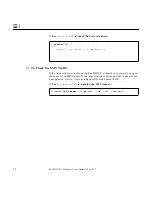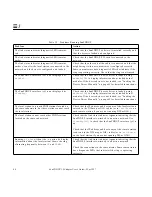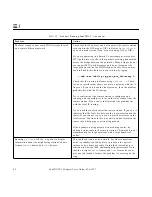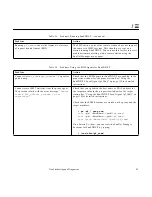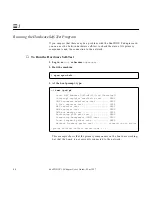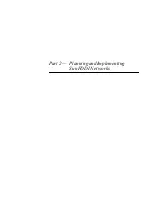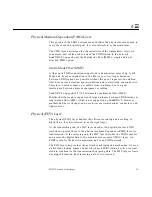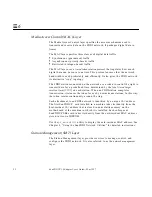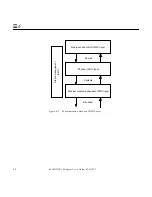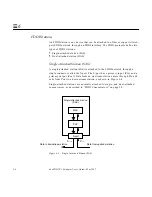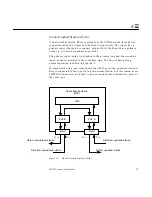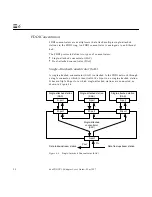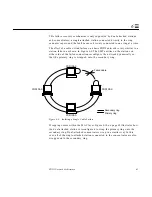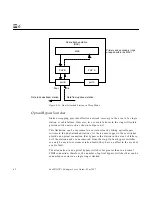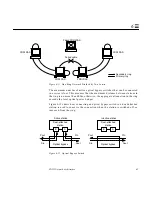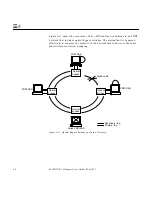
FDDI Network Architecture
51
6
Physical Medium Dependent (PMD) Layer
This portion of the FDDI network model defines the physical medium used to
carry the encoded digital signal. It is also referred to as the media layer.
The PMD layer determines the characteristics of the transmitters, receivers,
connectors, and cables used to attach the FDDI station to the network.
SunFDDI/P supports only the Multimode fiber (MMF)—single and dual-
attached PMD option.
Multi-Mode Fiber (MMF)
A fiber optic FDDI connection supports data transmission rates of up to 100
Mbps and, because attenuation in the fiber is very low, larger distances
between FDDI stations are possible without the use of repeaters. In addition,
fiber does not emit electromagnetic radiation and is electrically nonconductive.
Therefore, it neither causes, nor suffers from, problems due to signal
interference between adjacent equipment or cabling.
SunFDDI/P supports 62.5/125 micrometer, multimode fiber (MMF).
Multimode fiber cannot support such large distances between FDDI stations as
single-mode fiber (SMF), which is not supported by SunFDDI/P. However,
multimode fiber is cheaper, and uses lower cost terminations, connectors, and
light-sources.
Physical (PHY) Layer
The physical (PHY) layer handles the efficient encoding and decoding of
digital data. It is also referred to as the signal layer.
At the transmitting end, the PHY layer encodes the digital data into FDDI
symbols and passes them to the physical medium dependent (PMD) layer for
transmission. At the receiving end, the PHY layer decodes the FDDI symbols
and passes the digital data to the medium access control (MAC) layer. An
FDDI symbol is the basic transmission unit in an FDDI network.
The PHY layer also provides the network synchronization mechanism. It uses a
distributed clocking scheme under which each FDDI station has its own local
clock to synchronize the transmission of outgoing data. The PHY layer extracts
clocking information from incoming data as it is received.
Summary of Contents for 1.0
Page 13: ...Contents xiii Glossary 141 Index 147 ...
Page 14: ...xiv SunFDDI P 1 0 Adapter User s Guide May 1997 ...
Page 18: ...xviii SunFDDI P 1 0 Adapter User s Guide May 1997 ...
Page 25: ...Part1 InstallingandConfiguring SunFDDI P ...
Page 26: ......
Page 36: ...10 SunFDDI P 1 0 Adapter User s Guide May 1997 2 ...
Page 58: ...32 SunFDDI P 1 0 Adapter User s Guide May 1997 4 ...
Page 73: ...Part2 PlanningandImplementing SunFDDINetworks ...
Page 74: ......
Page 94: ...68 SunFDDI P 1 0 Adapter User s Guide May 1997 6 ...
Page 110: ...84 SunFDDI P 1 0 Adapter User s Guide May 1997 7 ...
Page 128: ...102 SunFDDI P 1 0 Adapter User s Guide May 1997 8 ...
Page 144: ...118 SunFDDI P 1 0 Adapter User s Guide May 1997 9 ...
Page 150: ...124 SunFDDI P 1 0 Adapter User s Guide May 1997 10 ...
Page 166: ...140 SunFDDI P 1 0 Adapter User s Guide May 1997 A ...
Page 172: ...146 SunFDDI P 1 0 Adapter User s Guide May 1997 ...
Page 182: ......


